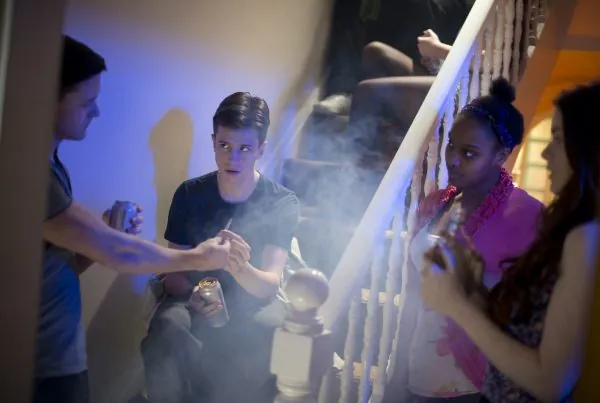If you’ve ever had a foot in the door of modern marijuana culture, you might have heard about the hype surrounding dabbing and might be worried about the potential side effects of dabbing, especially versus other forms of marijuana consumption.
In essence, a dab is a small amount of concentrated cannabis consumed via a specialized device or homemade dabbing setup. Dabbing involves the use of cannabis rosin, the distilled concentration of a cannabis bud’s sap, usually through a heating element like an iron, or more sophisticated methods, such as extracting the oil through a pressurized, high-temperature setup. It’s named a dab because all it takes is just a small amount or a “dab”.
To someone with a lot of experience smoking pot, dabbing might be considered a “step up”, as it isolates the psychoactive element of cannabis, THC. Among inexperienced or first-time users, the results of a dab will usually be different and more severe than a blunt or a joint. However, teens and adults who regularly dab are consuming much higher amounts of THC than most. The side effects of dabbing may range from a potent but short-term high to an increase in anxiety, or even dissociation, psychosis, and an increased risk of addiction.
Common Side Effects of Dabbing
To bring it to a point, dabbing involves the consumption of concentrated cannabis, utilizing a fairly simple method (usually heating a dried bud or flower) to extract and smoke a sticky resin with a much higher concentration of THC than normal.
The use of THC can make operating heavy machinery – like driving a car – dangerous and life-threatening. It can also affect memory and problem-solving, with both short-term and long-term negative effects on cognition after long use.
While not a hallucinogen, high levels of THC have also been linked to exacerbating the risk of an episode of psychosis. THC use can be dangerous for teens or people with a history of dissociative disorders or conditions such as schizophrenia. In even larger doses – which is hard to do with the raw plant, but much easier to do with dabbing – the use of THC can even result in hallucinations and a loss of personal identity.
How To Identify a Dabbing Setup
There are dedicated products and paraphernalia designed to facilitate dabbing, whether to help convert the wax or “shatter” (a glass-like form of concentrated marijuana) into its inhalable vapor, or to help extract wax or cannabis rosin from a bud or plant.
Something to watch out for is a dab rig. This usually involves a glass pipe with a metal element for heating. A blowtorch or lighter is used to heat the metal until it becomes red hot, at which point the concentrate can be applied to the metal, and the resulting vapors can be inhaled through the glass. A metal tool, like a dental pick or dental scraper, is used to apply the dab to the heated metal on the rig.
Certain dabbing pens are designed to heat a dab when inserted into the pen and look much like any other form of vape or e-cigarette. In these cases, it’s important to keep an eye out for extraction tools or a small vial or case of concentrate.
On the most basic level, teens can create marijuana wax with household objects, such as a flat iron and some parchment paper. More advanced and dangerous forms of extraction include butane hash oil extraction. Both a heating element and a pressurized vacuum are required, making it an involved and volatile process, with multiple instances of property damage, injury, and even death due to butane canister explosions.
What Are the Special Risks of Dabbing?
For those who willingly go through the trouble of dabbing, the touted benefits from a consumer standpoint include a stronger flavor, quicker onset of the targeted high, and the argument that inhaling the vapors of an extract is safer than the burnt hot smoke of a joint or blunt, which can cause buildup in the lungs.
But as with any strong psychoactive drug, higher levels of THC can introduce a considerable risk for the nervous system, especially in teens. While not toxic, THC temporarily disrupts parts of the brain responsible for coordination and concentration, as well as time perception and cognition.
Teen Substance Abuse Treatment
At Visions, we often hear parents ask about the specific health risks associated with dabbing, over other methods of cannabis consumption.
It’s important to remember that drugs can enter the bloodstream through a variety of different methods, but certain methods will result in a higher concentration of a given drug in the body than others. Eating will result in less of a drug entering the bloodstream than inhaling or injecting the same amount, for example.
Unlike edibles or orally consumable cannabis oils, dabbing allows teens to smoke and inhale concentrated THC. In both experienced and inexperienced users, this can result in a higher likelihood of severe or negative side effects than other methods of cannabis consumption and may increase the risk of addiction.
We also receive questions about dependence. Yes, marijuana dependence does exist, and cannabis can be addictive. Generally speaking, consuming more potent drugs will increase the risk of dependence.
As for how long the side effects of dabbing last, that depends on the amount that was used, the concentration of THC in the original plant, as well as the user’s own experience and tolerance for cannabinoids.
If you’re worried about a loved one’s drug use or want to talk to a professional about treatment options or staging an intervention, get in touch with us at Visions to learn more about our marijuana treatment programs, our treatment modalities for drug use, and co-occurring disorders, as well as our residential treatment options for teens.
Conclusion
Dabbing is nothing new, but it may be on the rise as dab rigs and dab pens become more readily available, making it easier to consume concentrated cannabis without a self-engineered setup. Parents and teens worried about the side effects of dabbing should beware that it can result in a higher risk of addiction, as well as a greater risk of psychosis than other forms of marijuana consumption.








